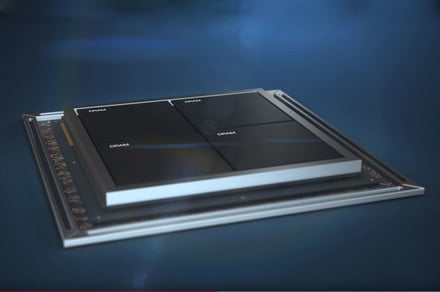Walden Kirsch/Intel Corporation
As much as Intel CPUs have dominated the laptop space for the past few years, it faces hot new competition from the likes of Qualcomm and a newly reinvigorated AMD. To help combat these threats, Intel is adopting some of the design principles of the ultra-portable space with Lakefield, a hybrid processor design. It combines a large, performance-focused CPU core with low-power, efficient cores for a processor that should be both powerful and efficient as and when you need it to be.
Intel hasn’t revealed heaps of details about its Lakefield chips just yet, but we do know a little. Here’s what we’ve found out so far.
Pricing and availability
Intel announced Lakefield in January 2019 at CES, debuting a raw die on stage and showcasing a video that broke down some of the hardware choices it had made in designing it. What it didn’t detail was a release date, although we have some hints that point to Lakefield showing up sooner rather than later.
Intel has said that it plans to have 10nm products on retail shelves by the end of 2019. That is more likely to be laptops sporting its Ice Lake CPUs, like the new Dell XPS 13 2-in-1. The Sunny Cove architecture used to craft Ice Lake will also be used to make Lakefield chips, however (see more below), so it would seem likely that if Ice Lake is close to retail, Lakefield may not be far behind.
We also have Intel’s leaked roadmap to go by. It suggested that Lakefield would debut in the second-quarter of 2019, which is a deadline that’s come and gone. But if we were only looking at a modest delay, it wouldn’t be impossible to imagine Lakefield chips showing up in systems before the end of the year, or early into 2020.
Pricing is harder to pin down, although it seems clear from the Lakefield design that Intel is targeting Qualcomm’s new Snapdragon 8cx as its main competitor in systems with long battery life and decent performance. With the first Snapdragon 8cx-equipped laptop, the Galaxy Book S, shipping in September for $999, we would expect systems fitted with a Lakefield SoC to compete with Snapdragon offerings on price too.
Architecture
[youtube https://www.youtube.com/watch?v=-besHp8HLxo]
The design of Intel’s Lakefield System on a Chip (SoC) is quite different from anything it’s made before. Instead of a number of high-performance cores like we see on its traditional desktop and laptop processors, this one combines a powerful Sunny Cove core with four, lower-power Atom processor cores. It’s built using Intel’s Foveros, three-dimensional integrated circuit design which layers LPDDR4 memory on top of processing cores and 11th-generation Intel graphics, which in turn sit atop the I/O die and cache.
This is both a design aimed at efficiency and physical space saving, allowing Lakefield to reside in smaller devices, delivering more power, and a greater efficiency.
Performance
Although a major focus of the Lakefield design is on efficiency and therefore battery life, Intel’s Lakefield chips will also have some processor muscle behind them. Alongside the efficient — but still capable — Atom Tremont cores, will be a single, Sunny Cove big-core. That’s the same architecture used in Intel’s new Ice Lake processors, which are themselves powerful and efficient.
Intel has claimed in the past that this design will offer comparable performance to its mid-range laptop processors, but with a far lower power draw. That seems like a best of both worlds scenario that is rare in computing hardware, but it’s an exciting prospect.
The 11th-generation Intel graphics cores are a big improvement over 9th-generation Intel UHD graphics cores and should make Lakefield processors reasonably capable at 3D rendering and video encoding, despite the diminutive size of the chip. It won’t be quite the leap we’re expecting to see with Intel Xe graphics processors though.
Efficiency
Performance is important, as Qualcomm’s 8cx’s competing favorably with Intel’s Core i5 CPUs shows, but where Intel really needs to make its ground up in the mobile space is in efficiency. With Lakefield, it claims to have done just that.
In slides released earlier in 2019, Intel claimed that compared to its eighth-generation Amber Lake mobile CPUs, Lakefield could offer between 1.5 and two times lower power consumption while active. Actual thermal design power was suggested in the roadmap leak as being 3-5 watts, although it’s now thought likely to be a 5-7 watt TDP chip.
Whatever the eventual power usage of Lakefield SoCs, Intel claims that it will make it possible for devices to have a battery life as long as 25 hours, with standby times up to a month. That may well be possible if the claimed standby power requirement is that low.
Editors’ Recommendations
-
Qualcomm Snapdragon 8cx vs. Intel Core i5
-
Intel 10th-gen Ice Lake CPUs: Everything we know so far
-
Ice Lake is here. Intel’s 10th-gen CPUs boast large gains in speed and graphics
-
Intel vs. AMD at Computex 2019
-
Intel Core i7 vs. i9: What’s the difference?

